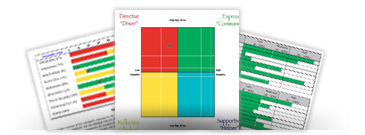Determining the Closing Point: Learn to Recognize the Buyer’s Shift
You have arrived to your sales appointment on time. You are well-groomed and have prepared a solid, gee-whiz presentation on your iPad. After building rapport, you have listened earnestly to the buyer’s responses to your smooth, guiding questions instead of talking the prospect to death. Things are going great — until you try your close.
All of a sudden the buyer’s demeanor changes, and a chill enters the room. She politely informs you that she will think about it, but that she has another appointment she must attend to. The ending is a statement is along the lines of “Don’t call me, I’ll call you.”
What in the world just happened?
While a million things could have caused the sale to fizzle at the closing point, one very likely reason was trying to close before the buyer was ready — before the “buyer’s shift” has occurred. This might have caused you to appear pushy or desperate, thereby destroying any rapport or confidence in you as a salesperson.
How to Recognize the Buyer’s Shift
The first thing to know is this: once the buyer has shifted, you have a small window of opportunity, perhaps only a minute or two, to offer the solution and close the sale.
Otherwise, buyers become frustrated with sellers who do not recognize that they are ready to buy, and instead keep asking exploratory questions.
Here are some of the things to look out for that might signal a buyer has shifted into “purchase mode”:
- Body language. Strokes chin; tilts head to one side; becomes more active; uncrosses arms; raises both eyebrows; pupils widen; leans towards you; sits on edge of chair; handles your sales material with hands. The common denominators are relaxation and willing to physically interact rather than keep you “at arm’s length.”
- Verbal signals. Buyer attachment statements, such as “This would help with our next quarter results,” which indicates she sees herself as owning the item already; repeating a question or asking you to explain a feature again, showing she is confirming that the item meets her needs; questions about warranties and guarantees; relates unfavorable stories about a specific competitor; probes you for personal details, which shows they are ready to buy the product, and just need to buy you also.
Once one or more of the factors above come into play, ASK FOR THE BUSINESS. It is still amazing to see how many people simply start packing their stuff up at this important closing point, thinking they will do some follow up and close later.
No. CLOSE NOW! Prospects expect to be asked for the business, so don’t disappoint them. You have at least a 50% chance of closing the sale if you ask for it after the buyer’s shift has occurred.
You can try a test close, such as “OK, where do we go from here?” or an actual close, such as “When would you like start the installation?” There are dozens of effective closes. If you don’t know many, I post some on this blog occasionally, so read through the past articles and subscribe to our feed.
Or consider taking one of our training classes. We will teach you.
In the meantime, learn to recognize the buyer’s shift at the closing point, and simply ask for the business when you see it!



